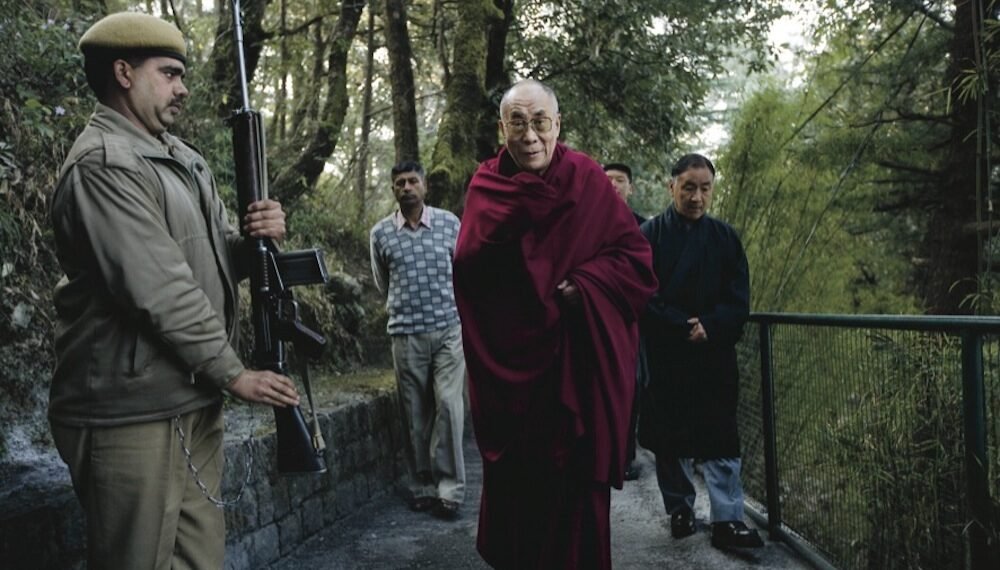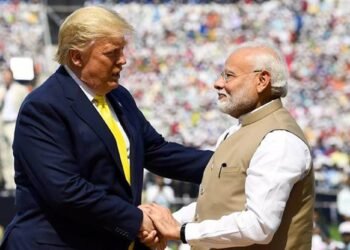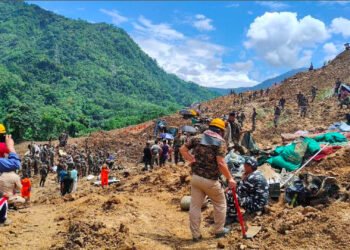Reports of cyber espionage concerns and intelligence inputs about potential attacks, prompted the the Modi Government to enhance the security cover of Dalai Lama. This decision comes as India navigates its delicate relationship with China while ensuring the Tibetan spiritual leader’s protection.
BY PC Bureau
The Indian government recently enhanced the security detail for the 14th Dalai Lama, Tenzin Gyatso, elevating it to a Z-category protection level. This decision was based on a threat assessment conducted by the Intelligence Bureau, which identified potential risks to the Tibetan spiritual leader’s safety.
Under the Z-category security arrangement, the Dalai Lama is now protected by a specialized unit of the Central Reserve Police Force (CRPF). This unit comprises 33 security personnel who provide round-the-clock protection, including static guards stationed at his residence in Dharamshala, Himachal Pradesh.
ALSO READ: Watch the Full Interview: With Musk by his side, Trump frowns at Tesla ’s India plan
Several factors have contributed to the decision to bolster the Dalai Lama’s security:
- Increased Threat Perception: Intelligence reports have indicated potential threats from various quarters, including actors possibly backed by China. Given the Dalai Lama’s global influence and the geopolitical sensitivities surrounding Tibet, these threats are taken seriously.
- Geopolitical Tensions: The relationship between India and China has been marked by periodic tensions, particularly concerning border disputes and regional influence. The Dalai Lama, as a prominent Tibetan figure residing in India, is a focal point in this complex dynamic. Enhancing his security is a precautionary measure amid these geopolitical considerations.
- Cyber Espionage: Past incidents, such as the “Shadow Network” cyber espionage operation, have targeted the Dalai Lama’s office, indicating persistent efforts to compromise his security and communications.
- Preservation of Tibetan Culture and Religion: Inside Tibet, reports have emerged of heavy surveillance, strict censorship, and efforts to erode Tibetan culture. The Chinese government’s policies, including the control over religious practices and the selection of spiritual leaders, have raised concerns globally. Ensuring the Dalai Lama’s safety is seen as vital for the preservation of Tibetan cultural and religious identity.
It’s mind numbing to even process how even at the sunset age of almost ninety, Chinese Communist Party is hellbent on eliminating the Dalai Lama. Thanks to the government of India for upgrading the security level to Z due to intel of a possible threat. pic.twitter.com/u4CybLLrOj
— Ugyen Gyalpo (@UGyalpo_Tibet) February 13, 2025
ALSO READ: Trump Calls for Ukraine Elections, Zelenskyy Fires Back
Implications of the Security Enhancement
The decision to provide Z-category security to the Dalai Lama underscores India’s commitment to his safety and acknowledges the complex geopolitical landscape involving China and Tibet. It also reflects India’s recognition of the Dalai Lama’s significance as a spiritual leader and a symbol of Tibetan identity.
This move may influence diplomatic relations, as China has historically opposed any support extended to the Dalai Lama, viewing him as a separatist. India’s actions could be interpreted as a stance on Tibetan autonomy and human rights, potentially impacting Sino-Indian relations.
In summary, the enhancement of the Dalai Lama’s security by the Indian government is a multifaceted decision influenced by immediate security concerns, broader geopolitical dynamics, and a commitment to preserving Tibetan culture and religious freedom.
Past Threats to the Dalai Lama’s Life
1959 Escape from Tibet
- The Dalai Lama fled Tibet after the Chinese military crackdown on the Tibetan uprising. Disguised as a soldier, he crossed into India under constant threat of assassination.
1997 Kundun Controversy
- Chinese intelligence reportedly attempted to harm the Dalai Lama following the release of Kundun, a Hollywood film about his life. Beijing saw the film as Western propaganda.
2008 Beijing Olympics Unrest
- During the Tibetan protests against China before the Olympics, reports emerged of Chinese-backed groups planning attacks on the Dalai Lama’s circle.
2018 Assassination Plot Foiled
- Indian intelligence intercepted communications indicating that pro-Beijing operatives were planning an attack on the Dalai Lama in Dharamshala. Security was tightened immediately.
2023 Espionage Attempt
- An alleged Chinese spy was caught posing as a monk in Dharamshala, reportedly gathering intelligence on the Dalai Lama’s movements.













